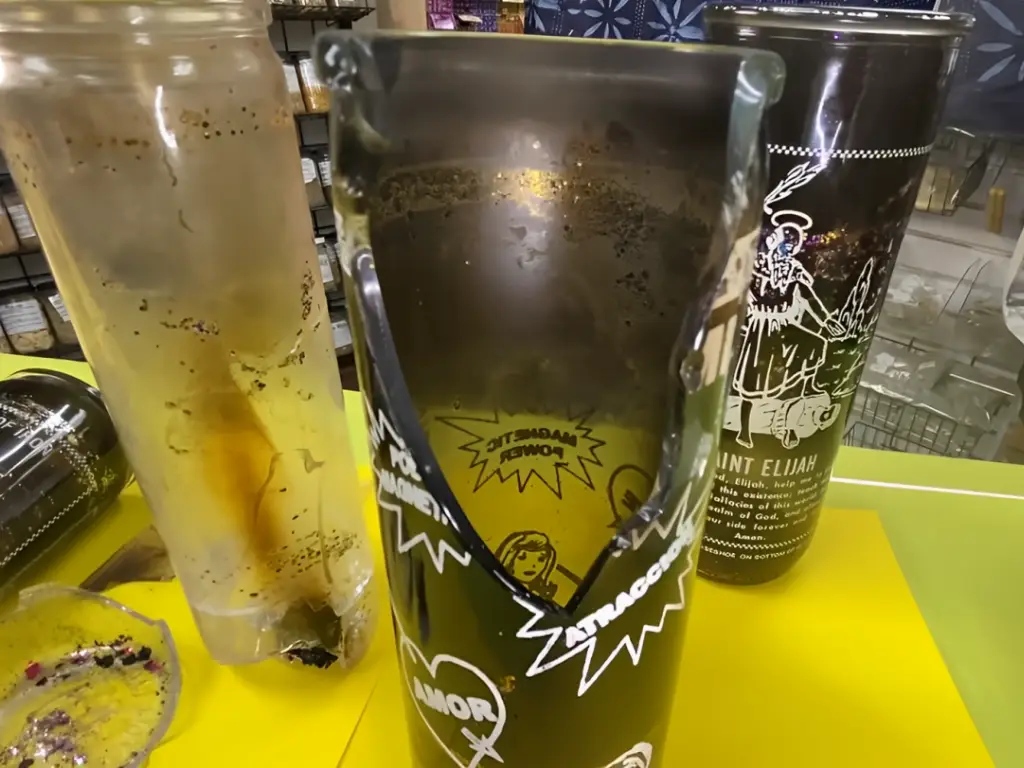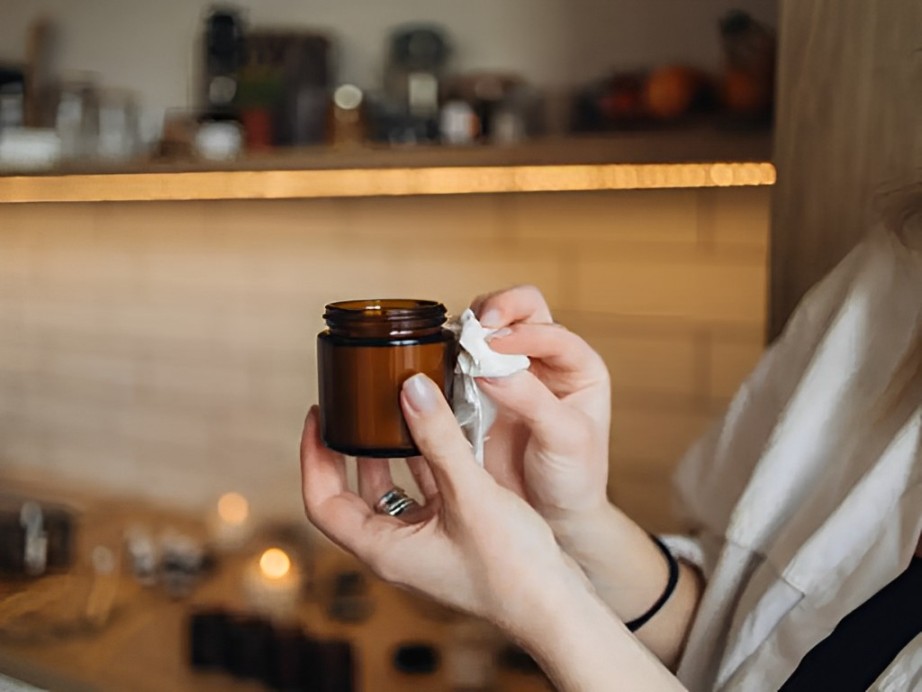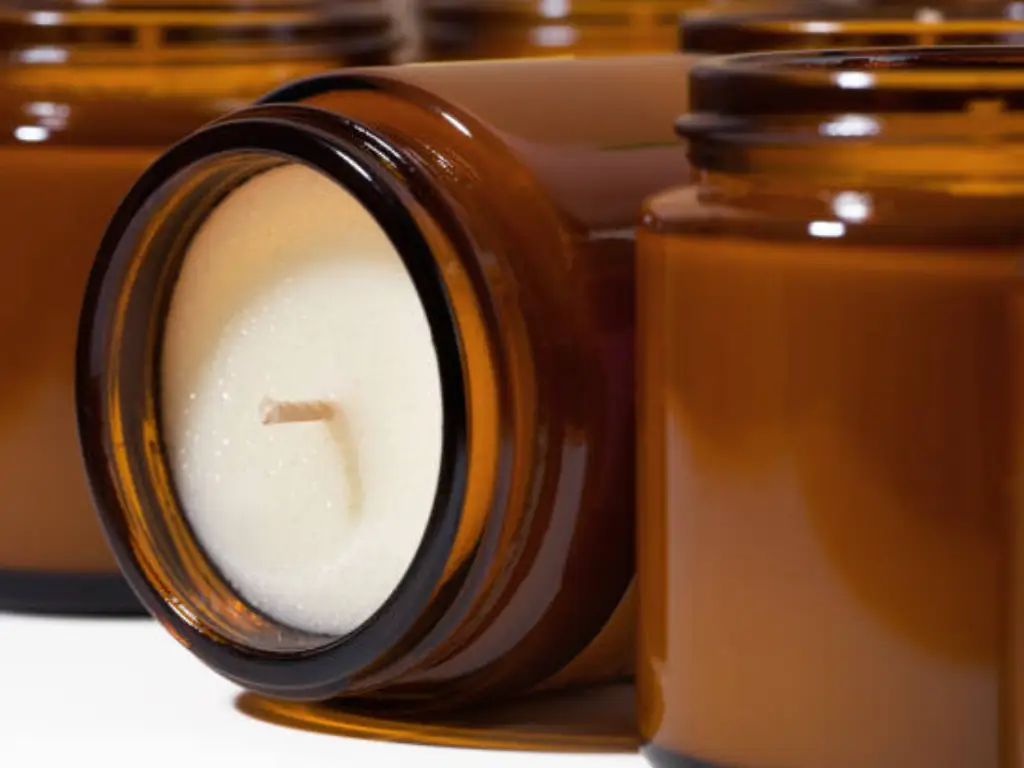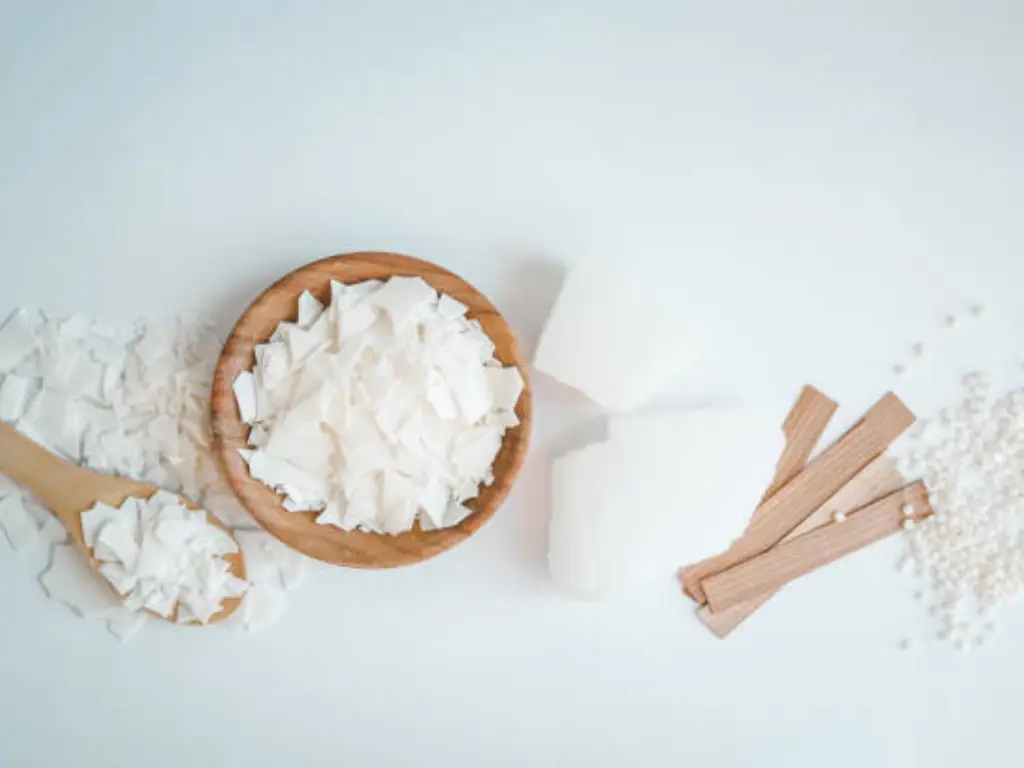Introduction: Unveiling the Mystery of Blackened Candle Jars
Candles with their warm glow and lovely scents can turn a room into something magical, but you might get annoyed when your candle jar turns black. If you are wondering, “Why is my candle jar turning black?” then you are not alone. The black soot that accumulates on the sides of the candle glass can be very puzzling, but in fact, it is a common problem with candles. This article will investigate the materials that cause black residue, the main reasons for the blackening of candle jars, the methods of removing soot from your jars, and the prevention strategies to keep them clean. Continue reading!

Why Does My Candle Jar Turn Black?
The centerpiece to understand why candle jars turn black, we should look into the candle combustion process. During a normal burning process, the candle flame undergoes a complete combustion where it feeds on the candle wax efficaciously, leaving behind very few by-products. Nevertheless, the incomplete burning of a candle can result in the creation of soot or the black residue inside the candle container.
Partial combustion is the process of incomplete burning of the candle flame, which occurs due to insufficient oxygen or too much wax to burn. The situation leads to the formation of cooler flame that, in turn, results in the formation of carbon particles instead of the complete conversion into carbon dioxide and water vapor. These carbon particles are the soot which is seen as black and can stick to the inner surface of the candle glass, thus, making the candle unsightly and affecting its burning time. Furthermore, multiple variables are involved in the problem of candle smoke, such as the type of wax, the wick material, and even the surrounding environment.
The main factor that leads to the black soot in a candle is the particular kind of wax used in it. For example, paraffin wax produces more candle soot because it has considerably more impurities than soy wax or beeswax. These impurities on the wick release tiny carbon particles when the candle is burning, hence forming the black ring or streaks on the inside of the candle glass. This accumulation does not only look bad, but it can also affect the performance and burn time of the candle.
Besides, wick material is also an important factor. Thick wicks with metal cores are bound to produce black smoke and thus more soot in the process. Moreover, if the candle wick is longer than necessary, the flame will be bigger and the candle will produce more soot particles. Wick length and material are the key factors which have a great impact on the clean burning. Wick trimming is a very important thing to do. Trimming the wick to about 1/4 inch can help the flame stay steady and reduce the risk of candle soot.
Environmental factors are also among the causes of the black residue. Lighting the candle in the places or rooms with poor ventilation usually produces more black smoke. The air flow is not even which may cause disruption of the combustion process and this will lead to black soot. These activities may lead to poor indoor air quality and may even be hazardous to people who have asthma or allergies.

Effective Methods for Cleaning Black Candle Jars
However, the removal of soot from candle jars is not a difficult job if you are aware of the proper techniques. The black residue that grows inside the jar is typically due to incomplete combustion, which leaves carbon particles to form on the glass. Follow the instructions below to properly clean the candle reside and bring back the shine of your candle jar.
- Utilize a damp Paper Towel: An easy and fast approach to remove soot from a candle jar is to use a wet paper towel. Gently scrub the inside part of the jar, paying special attention to the areas that have a black deposits. It is possible to use a mild detergent such as dish soap, Castile soap and laundry detergent for delicates to help the soot decompose in case. This method is very effective for removal of light to moderate residue and it is a nice way to keep your candle jar neat.
- Apply Rubbing Alcohol: With the tougher black stains, alcohol rubbing can be a good idea. Use a small amount of the cleaning solution onto a cloth or paper towel and gently rub the surfaces with the worst soot buildup. It would help in scraping off the carbon particles that are more deeply embedded in the glass. Make sure you rinse the jar with water after to clear off the alcohol completely.
- Use a Cleaning Broom: If the soot is in the areas that are hard to reach like the edges of the jar, you might use a small cleaning brush, for example a toothbrush, to scrub off the black deposit. This is the most useful in cases of jars with complicated drawings and shapes. The bristles on the brush are flexible enough to get into tight spaces and can remove the soot particles more efficiently.
- Try the Vinegar and Baking Soda: A natural cleaning method is based on a vinegar-and-baking-soda mixture. Mix vinegar and warm water in equal parts while adding a small amount of baking soda. It generates a gentle abrasive solution that can be used to break soot down. Use it on a piece of cloth to scrub the interior of the jar. By using this method, we are able to clean candle jars without using harsh chemicals, which are eco-friendly and effective.
Frequent cleaning of your candle vessels not only enhances their appearance but also assists in better burning. By preventing the glass from getting sooty, you can make sure that the candle flame remains steady and the candle stays lit longer, which will offer you a better and more enjoyable candle experience.

Preventive Strategies to Maintain a Clean Candle Jar
To avoid your candle jar turning black, you can use some strategies that make the candle burns clean and increase the efficiency of the burning of candles.
Properly Trim Your Candle Wick for Optimal Combustion
Cutting your wick is a basic but very important process that helps your candles to burn clean and evenly. A wick that is properly trimmed does not allow black sooting to accumulate in the candle jar. Here’s how to properly trim your candle wick in order to obtain the best burning and avoid the common mistakes that can lead to incomplete combustion and excessive sooting.
The first thing you need is to get the right tools for the job. You may use a pair of sharp scissors, but a wick trimmer is definitely a better option. The specialized tool is created to cut the wick at the right angle and the correct length without bending or breaking it. Prior to lighting your candle, always cut the wick to 1/4 inch. This is the perfect length for maintaining a stable flame that does not produce much heat or soot.
While trimming the wick, make sure that any extra wax or debris is removed from the top of the candle. If the melted wax around the wick is in abundance, it can impede the combustion process and cause the flame to be flickering or sputtering. The unstable burning of the candle results in more carbon particles that settle as black soot inside the candle glass. Use a damp paper towel to clean the area around the wick after trimming, to make sure that you have a clean start.
Another significant point to be noted is to trim the wick after every use instead of just when you first light the candle. When candles are burned, the wick may develop a “mushroom” shape at the end making the flame to grow too big. This is the main reason for uncontrolled soot and black smoke emissions. Trimming the flame regularly prevents it from getting too big and prevents soot buildup.
Choose the Right Candle Wax to Minimize Soot Production
The selection of appropriate candle wax is the most important factor of soot reduction and burning candles without soot production. Different types of waxes are characterized by different levels of impurities and combustion characteristics, which can lead to the formation of black smoke and black soot in various amounts. Let’s discover the most efficient candle wax options that will prevent you from having black residue and maintain a cleaner burn.
Soy wax is one of the most common waxes used for clean burning. This wax is made from soybeans and is renewable, with less soot being produced than what is produced by the traditional paraffin wax. Soy wax candles frequently melt evenly and at a lower temperature, so they reduce the probability of incomplete combustion and too many carbon particles. If you want to buy a candle that promises a long burn time without leaving any soot, soy wax is a great choice.
Beeswax is another great alternative if you want to switch to a cleaner candle experience. The beeswax candles are derived from natural materials which are renowned for their even and slow burning. This wax has lower impurities than paraffin and it can reduce the chance for black smoke and black soot. Besides that, beeswax candles usually produce a sweet and delicate aroma, which increases their appeal.
In terms of the traditional paraffin wax candles, there are methods that will help you to burn them cleaner. If you are into candles, look for those labeled “food-grade paraffin,” as these are refined allowing most of the contaminants that generate soot to be removed. Besides that, candles with wicks made from natural fibers, such as cotton or hemp, could also be a perfect solution to minimize the soot production.
But when selecting candles, try the ones made from blended waxes as well. Some manufacturers mix different waxes to offer a better-balanced burning experience. These mixes are able to provide the best of both worlds; they have the long burn time of paraffin. However, they are cleaner than other types of candles, like beeswax or soy wax.
Burning in the Ventilation for Reducing Candle Jar Blackening
The proper ventilation is necessary in order to prevent the black soot from depositing on the candle jars. Candles that create smoke and soot particles in poorly ventilated spaces are more likely to burn in this way. Let’s look into how ventilation is a key factor in the soot reduction and in getting a cleaner candle-burning process.
While candles burn, they need oxygen to be in a continuous supply to keep the flame at a constant level. When the ventilation is not enough, the air becomes stagnant, which results in incomplete combustion. Such a process leads to carbon particles that are deposited on the sides of the candle glass and cause a dark ring. Proper ventilation is required to facilitate the air circulation, which is necessary to provide the oxygen needed for complete combustion and minimizes the likelihood of blackening.
For better ventilation, you can use candles in drafty areas where air can blow freely. Do not burn candles in narrow and poorly ventilated rooms or spaces. If you intend to use candles in small rooms, please make sure that there is a window or a fan for ventilation. This prevents the accumulation of soot particles and thus improves the air quality overall, which is of great importance for those suffering from asthma or allergies.
Besides, do not burn candles near the drafty locations. The main purpose of a good draft is to prevent candle flame from flickering, which again results in uneven burning and more soot production. The optimal airflow for a candle to burn cleanly is a consistent, moderate one. Moreover, you might want to utilize candle accessories such as candle snuffers for the purpose of putting out the candle without creating extra smoke, which reduces the risk of black soot deposits.
Implementing these preventive actions will help your candles burn more cleanly and efficiently. Not only will this prevent your candle jars from being filled with black residue, but it will also make your candle-burning experience a whole lot better as you will now be able to enjoy the ambience and scent of your favorite candles without the mess.

Conclusion
This article specifically discussed the reason behind the blackening of candle jars, and gave out the common causes of black soot and black residue. We talked about how to remove them without causing harm to the environment and gave tips to avoid their appearance. Through trimming the wick, making sure there is good ventilation and using better candle wax, you can ensure that you have a cleaner burn and the candle will last longer.
To keep your business away from the trouble of blackened candle jars, you should purchase from a reliable candle jar supplier like DAXIN. What’s more, when you light a candle next time, remember these tips mentioned above and enjoy the warm glow without worrying about the black residue.



